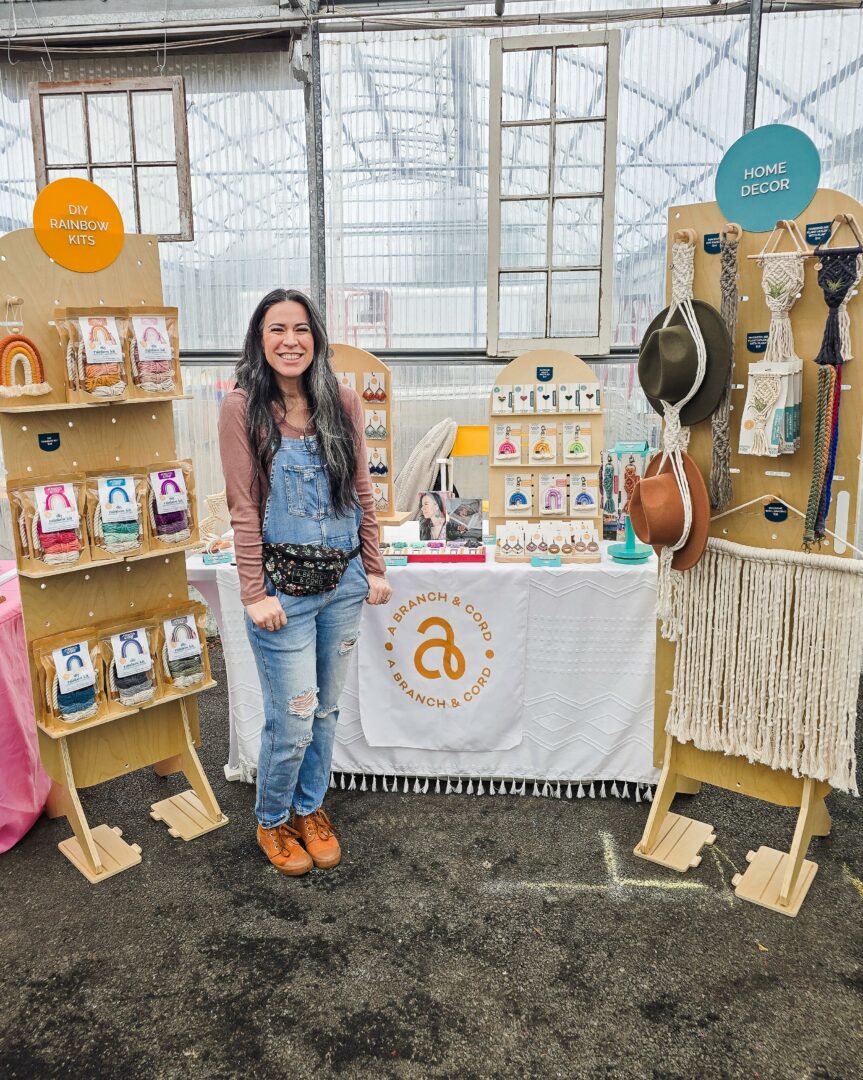Alright – so today we’ve got the honor of introducing you to Anastassia “Tess” Cassady. We think you’ll enjoy our conversation, we’ve shared it below.
Hi Anastassia “Tess” , really happy you were able to join us today and we’re looking forward to sharing your story and insights with our readers. Let’s start with the heart of it all – purpose. How did you find your purpose?
I grew up with a Ukrainian mother. Naturally, we had byzantine Icons, embroidery, Pysanky (dyed Easter eggs), and beautifully cooked meals. From a very young age, I began making Pysanky every Easter. Raw eggs are painstakingly dyed from light colors to dark colors using a wax-resist method similar to Batik. After Easter mass, the eggs are gifted to close family friends and relatives. Every year I would delight in the joy my Pysanky brought to my relatives. In particular, I saved my best eggs for my Aunts. I regarded them as my most important critics. They would notice the divisions, and the unique color schemes, and symbolic references more than anyone else I gifted Pysanky to. If they praised my Pysanky (which they always did, whether they were truthful or not), the euphoria and pride I felt in my craftsmanship was, quite honestly, the most incredible feeling my younger self had ever encountered. I loved the process of creating, but even more, I loved the process of gifting. I love bringing something beautiful into existence that can bring joy to someone else. Honestly, creating something beautiful, for beauty’s sake is good enough for me. One of my favorite quotes comes from Fyodor Dostoevsky: “Beauty will save the world.”But it is such an incredible bonus when the piece of art can be even more than just beautiful. As a professional artist, I adore oil painting. In particular, I love to paint portraits. I love matching someone’s personality with an outfit or costume that is either vaguely ageless or intentionally a particular era. But I have a rule with myself, that I must always be working on a byzantine icon- whether as a commission or a personal project. Writing icons is an example of creating something that is more than simply beautiful. The process itself is a prayer. I use traditional methods: homemade egg tempera, incense, genuine gold leaf, etc. Not only is the process an aid to prayer, but the commissioned/or gifted icon continues to act as an aid to prayer for the intended recipient. That is my purpose. The moment the piece exchanges hands. I live for that. Even if it feels like I am losing a piece of myself, something that I put so much of myself into.
Let’s take a small detour – maybe you can share a bit about yourself before we dive back into some of the other questions we had for you?
I am a professional freelance artist. I work on commissions in Oil paint, Egg Tempera Byzantine Iconography, Lino Block Printing, Church restoration/muralist. I recently just illustrated a book that was just released (available anywhere books are sold) entitled: “Saints: A Family Story”. Written by John and Catherine Cavadini. I also Teach advanced High School art and middle school math.
At the start of the Russian invasion into Ukraine, I created a fundraiser by selling a Lino-cut print of Saint Michael (patron Saint of Kiev). I was able to raise over 30,000 that was successfully sent to my family in Ukraine who were helping with refugees and evacuating those in need.
My biggest push, as a Ukrainian catholic, is to make religious art un-kitschy . Why can’t it be religious AND beautiful?
Looking back, what do you think were the three qualities, skills, or areas of knowledge that were most impactful in your journey? What advice do you have for folks who are early in their journey in terms of how they can best develop or improve on these?
Resilience Patience
Forever learning
Honestly, when people ask how I got to be in a place with steady commissions…I tell them to stop trying to get commissions. You need to create the art that your soul is pulling you to create. You need to have some sort of vision and passion. And that vision and passion needs to be from your own inner drive. Not what someone is telling you to do. If you don’t know what drives you, or what your style is- when someone commissions something and they tell you exactly what they want, two things can happen:
1- you become a human copy machine
2- you become disenchanted with the medium because the commission is not going well and you give up. And you begin to convince yourself that it is only due to your shortcomings. But, honestly, a lot of the time, the patron has a shitty visual idea or prompt. Being an artist is not just the skill of creating on a surface, but composing the image in your mind. The patron is commissioning an artist, but the artist also has a role in guiding the patron with their image and being apart of the composition of the idea. But if you aren’t practiced enough, and you become the human copy machine of a patron’s idea- even if you execute it perfectly, the piece is only as good as the original idea. A perfect execution of a shitty idea is a shitty painting. Build your portfolio, people will find you. And the people that find you will contact you because they adore your work. If they commission you, they will expect you to make the work your own within the framework of their idea.
All the wisdom you’ve shared today is sincerely appreciated. Before we go, can you tell us about the main challenge you are currently facing?
As a painter, I cannot stress enough the importance of original artwork. A print of an oil painting just cannot compare. You lose the physical texture, the depth of saturation, and a lot of time, the size. With iconography, a copy of gold leaf is just an abomination! Partly kidding, but come on, gold is gold. I struggle because I’m faced with the question, “Is it better to have blank walls if one cannot afford an original? What does that do for visual literacy? etc, etc” It is tough, I get it. But there are so many artists out there willing to sell work. This is where I compromise:
1 If you buy a print, it had better be something you have fallen in love with and not a print for the sake of filling wall space. Paintings and framed art have become white noise.
2. Don’t try to make it look like an original. Don’t print it on a canvas. Most paintings do not have canvas texture visible. They are gessoed and in most cases heavily painted on. The colors are consolidated and ruined. Abomination.
3. If you are going to professionally frame a print…and the print is not a life-changing piece… price out the amount you are spending on framing. Framing is expensive. See if you can go to a locally art gallery or art-walk and find something in that range.
4. Frame a poster of a work that was made for a gallery exhibition. You know, the ones with the Museum’s name on it? That way you are not trying to fake an original.
So I get a lot of grief about not selling prints of most of my work. Yes, I am missing out on a lot of money. But the integrity of my work is more important to me. Prints just do not do it justice. I have resolved the issue in part by offering giclee prints of my watercolor pieces. Watercolor pieces turn out very close to the original.
Contact Info:
- Instagram: cassadytess










Image Credits
Adina Brown-Selner for family Photo




